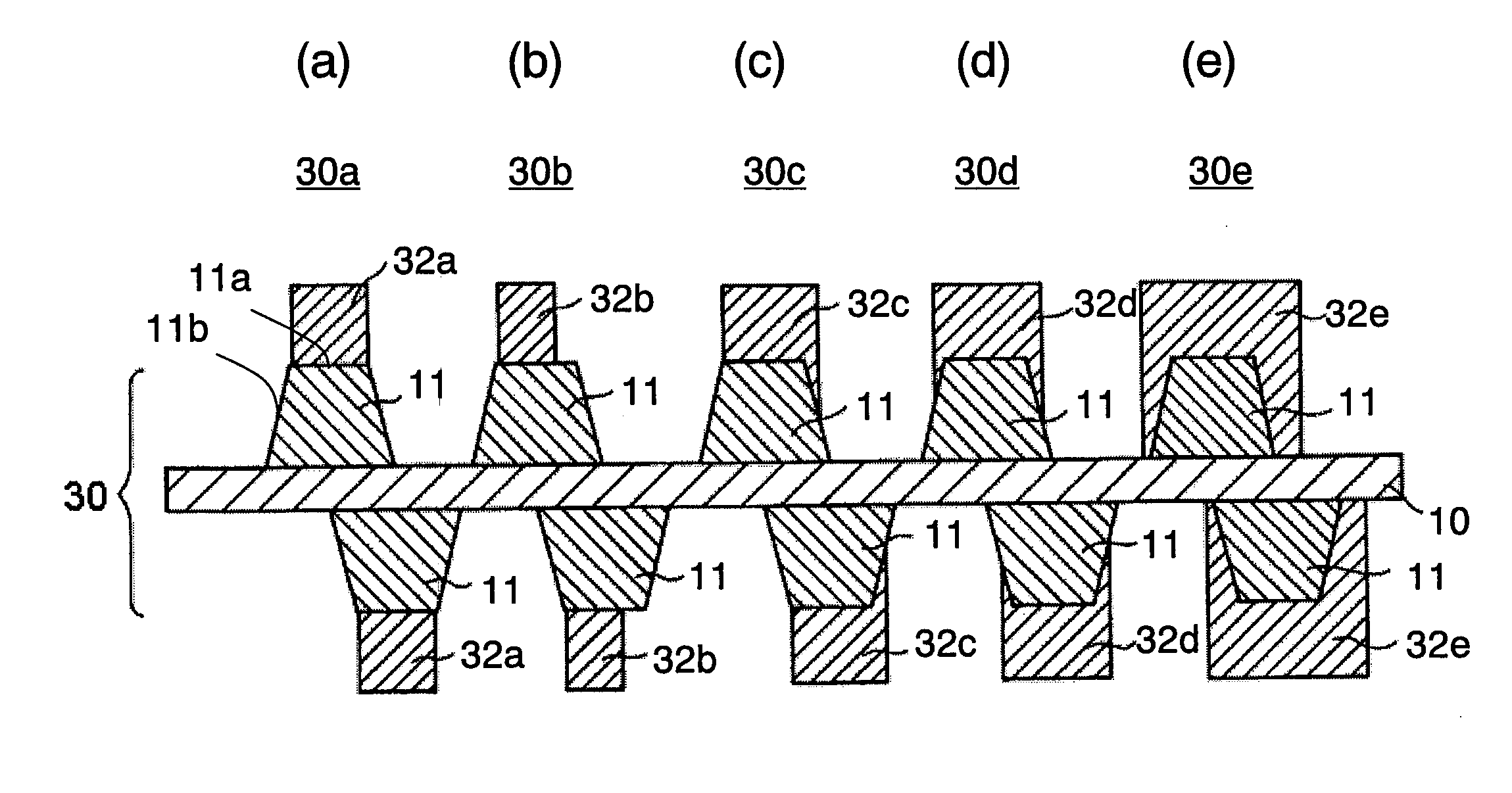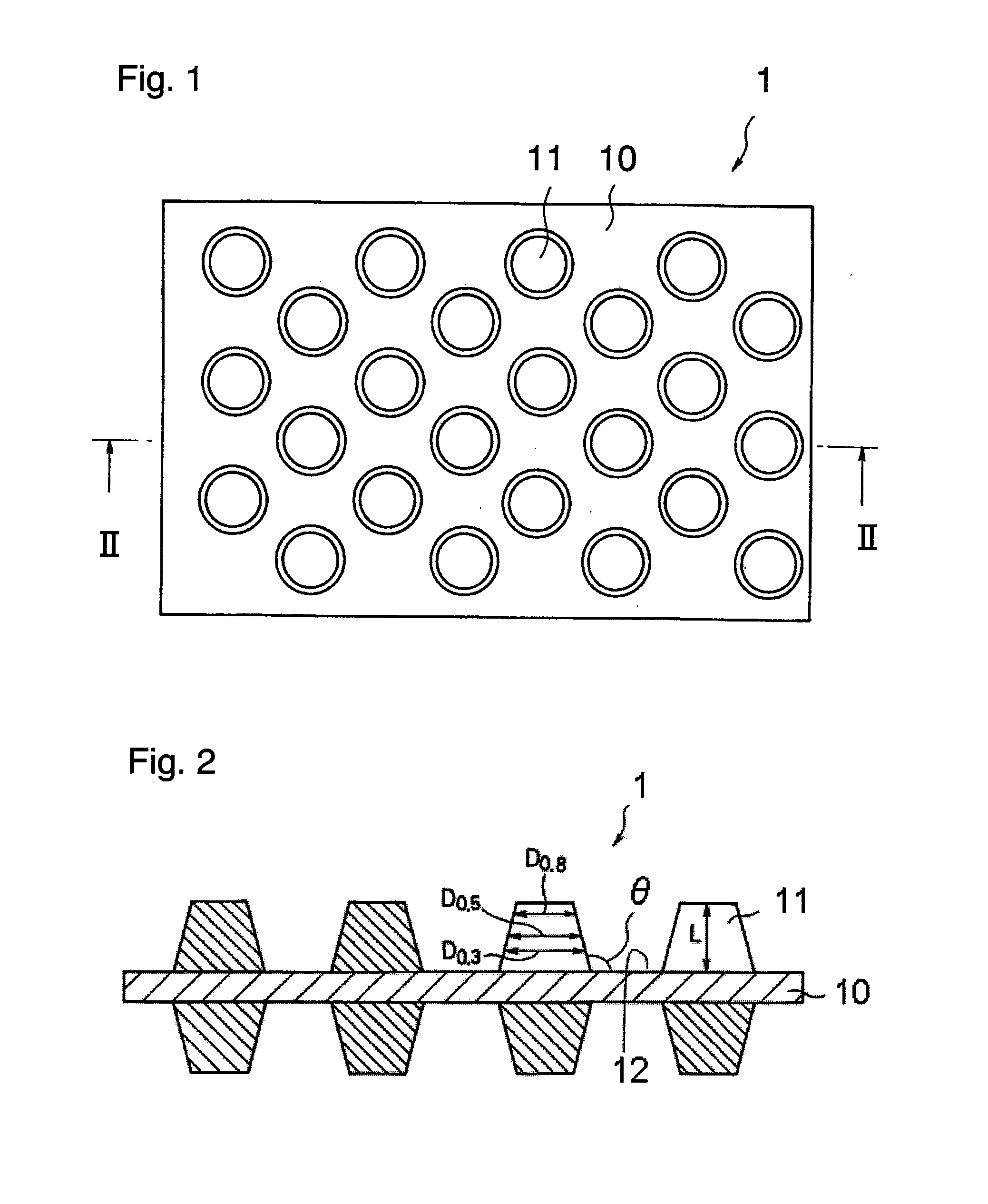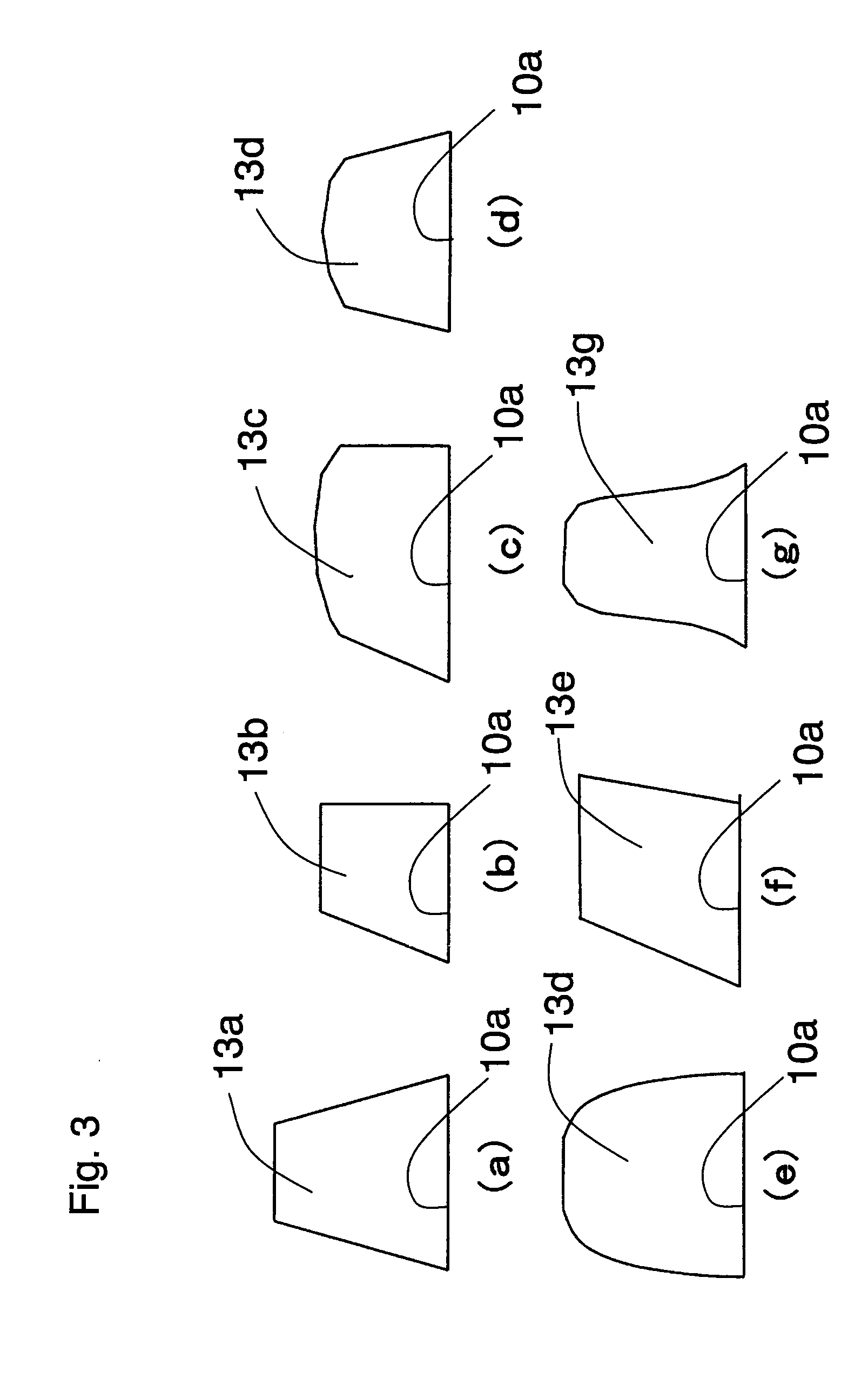Current collector, electrode, and non-aqueous electrolyte secondary battery
a technology of current collector and electrode, applied in the direction of cell components, final product manufacturing, sustainable manufacturing/processing, etc., can solve the problems of significant changes in the structure of current collector followed by electrode deformation, reduction of electron conductivity between the alloy-based active material layer and the current collector, etc., to achieve excellent charge/discharge cycle characteristics, relieve or disperse stress, and high energy density
- Summary
- Abstract
- Description
- Claims
- Application Information
AI Technical Summary
Benefits of technology
Problems solved by technology
Method used
Image
Examples
example 1
(1) Production of Current Collector
[0169]A ceramic roller with a plurality of recesses formed thereon was mounted as the roller 15 on the current collector production apparatus 20 shown in FIG. 5, the recesses having a depth of 8 μm and being approximately circular in shape with a tapered cross section (bottom diameter: 8 μm, opening diameter: 12 μm). A 15-μm-thick aluminum foil serving as the raw material sheet 23 for current collector was passed through the press nip 21a in the current collector production apparatus 20 under pressure and was subjected to compression and non-compression, whereby a current collector 65 shown in FIG. 13 was produced. FIG. 13 is a set of drawings schematically showing a configuration of the current collector 65 as one embodiment of the present invention. FIG. 13(a) is a top view of the current collector 65. FIG. 13(b) is a longitudinal cross-sectional view of the current collector 65, namely, a thickness-wise cross-sectional view.
[0170]The obtained cu...
example 2
(1) Production of Current Collector
[0177]A ceramic roller with a plurality of recesses formed thereon was mounted as the roller 15 on the current collector production apparatus 20 shown in FIG. 5, the recesses having a depth of 10 μm and being approximately rhombic in shape with a tapered cross section (bottom diameter: 15 μm, opening diameter: 20 μm). A 12-μm-thick copper foil serving as the raw material sheet 23 for current collector was passed through the press nip 21a in the current collector production apparatus 21 under pressure and was subjected to compression and non-compression, whereby a current collector 66 shown in FIG. 14 was produced. FIG. 14 is a set of drawings schematically showing a configuration of the current collector 66 as one embodiment of the present invention. FIG. 14(a) is a top view of the current collector 66. FIG. 14(b) is a longitudinal cross-sectional view of the current collector 66, namely, a thickness-wise cross-sectional view.
[0178]The obtained cur...
example 3
[0184]The non-aqueous electrolyte secondary battery 40 as shown in FIG. 11 was fabricated in the following manner.
(1) Production of Current Collector
[0185]The current collector 65 was produced in the same manner as in Example 1 except that the depth of the recesses formed on the surface of the ceramic roller was changed to 10 μm, and a 18-μm-thick copper foil was used as the raw material sheet 23 for current collector. The obtained current collector 65 was a band of current collector including the base 10 made of copper and approximately circular 8-μm-high projections 11 regularly formed on both surfaces of the base 10 in its thickness direction, the current collector having a total height t2 of 26 μm.
[0186]The arrangement pattern of the projections 11 in the current collector 65 was of a closest-packed arrangement. Therefore, the current collector 65 had a sufficient durability against the tensile stress applied thereto in the longitudinal direction Y. Because of this, in processin...
PUM
| Property | Measurement | Unit |
|---|---|---|
| surface roughness | aaaaa | aaaaa |
| elastic modulus | aaaaa | aaaaa |
| elastic modulus | aaaaa | aaaaa |
Abstract
Description
Claims
Application Information
 Login to View More
Login to View More - R&D
- Intellectual Property
- Life Sciences
- Materials
- Tech Scout
- Unparalleled Data Quality
- Higher Quality Content
- 60% Fewer Hallucinations
Browse by: Latest US Patents, China's latest patents, Technical Efficacy Thesaurus, Application Domain, Technology Topic, Popular Technical Reports.
© 2025 PatSnap. All rights reserved.Legal|Privacy policy|Modern Slavery Act Transparency Statement|Sitemap|About US| Contact US: help@patsnap.com



